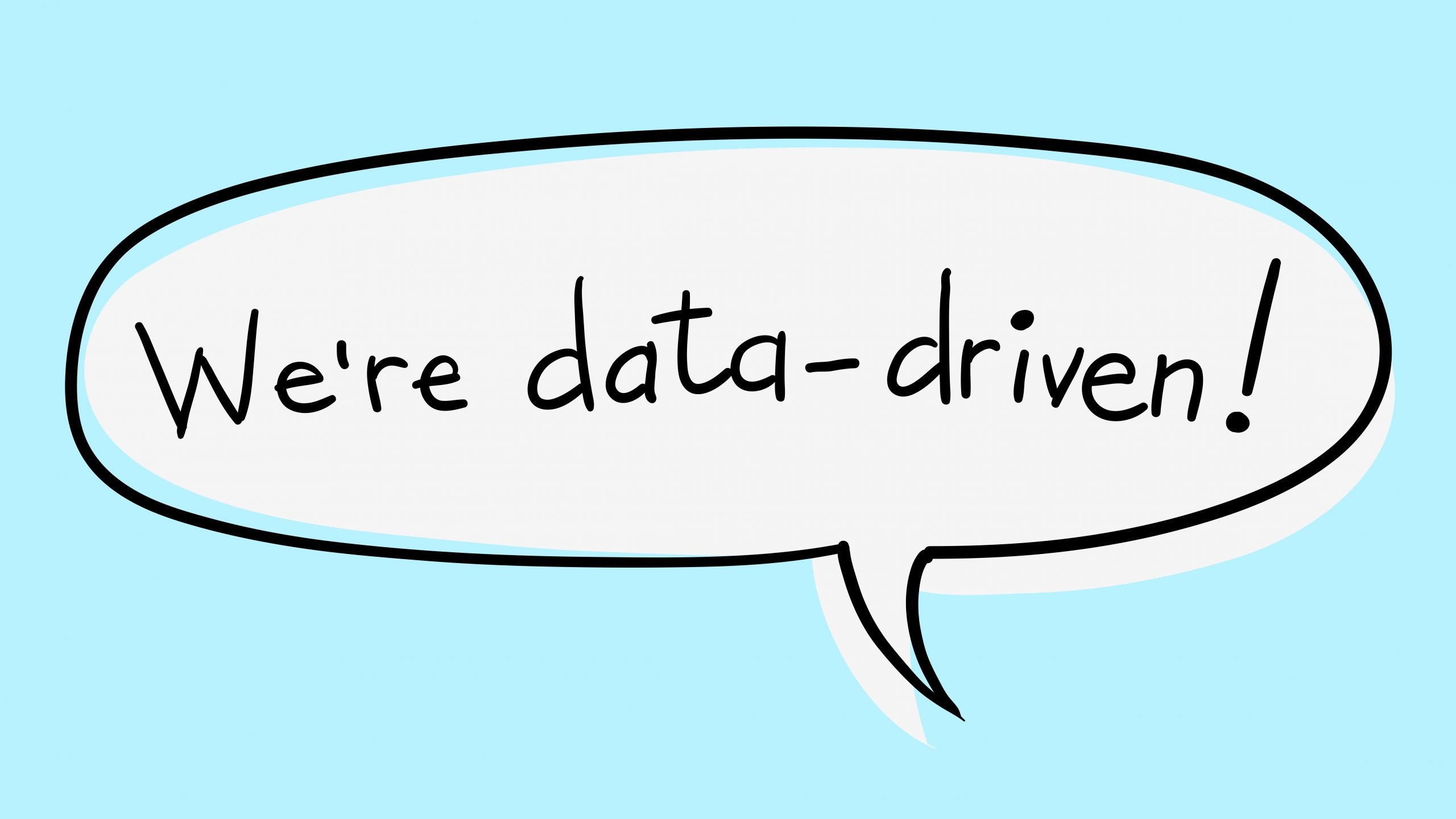Every industry has its own jargon, a set of words or phrases that are instantly understood when relayed to another from the same industry, even if the meaning is lost on the average person. Data science is no different. The problem is that the lingo used by a data science team is constantly in a state of flux.
Technology is advancing very rapidly, as anyone with a mobile device or social media account can agree. The buzzwords of the data science industry must also change rapidly. As new concepts are developed and realized, the data science teams, vendors, and any business that needs data analysis must come up with new words to match the new technologies.
Who Needs to Know These Buzzwords?

People from many different backgrounds will benefit from keeping up-to-date with the latest data science buzzwords. Those who work directly with developing new technology and the data analysts have to keep up, but they are likely to stay familiar with the changing lingo naturally—they are the ones creating the jargon. Also, anyone who is looking for work in the data science field should be aware of the current terminology.
Others who need to stay up-to-speed may not seem so obvious. For instance, HR professionals need to be fluent in data science buzzwords so that they know how to write up an accurate job description. Frequently, listings for the same type of job will be listed under different headings because the HR departments of different businesses struggle to keep up with the rapidly changing jargon.
As e-commerce grows ever more important and technology transforms the healthcare industry, these new buzzwords are going to continue to increase. Knowing what these words mean and the contexts in which they are used is vital for anyone who works in, or adjacent to, the fields of business intelligence, data analysis, and computer science.
The following is a list of 12 data science buzzwords that are frequently used in the data science industry today.
12 Data Science Buzzwords Every Data Professional Should Know

1. Big Data
Every time you search the internet, make a credit card purchase (either online or in-person), use social media, make a phone call, send a text, or complete any other task that uses a digital connection, you leave a data footprint. Big data is the term used to describe the massive amount of data generated by these footprints.
In 2001, an expert in data science working at Gartner, a premiere research firm, came up with the 3 Vs to describe big data. They are:
- Volume. The tremendous amount of data gathered in these repositories is mind boggling. In 2020, big data was estimated to contain over 44 zettabytes, or 44 trillion gigabytes, of data.
- Velocity. Velocity is the incredible speed needed to capture the data streaming from every connected device around the world simultaneously.
- Variety. This data comes in a wide variety of forms, including video, audio, images, texts, and real-time data. Each of these forms requires different methods and means to be processed and mined for useful information.
Get To Know Other Data Science Students
Peter Liu
Business Intelligence Analyst at Indeed
Lou Zhang
Data Scientist at MachineMetrics
Hastings Reeves
Business Intelligence Analyst at Velocity Global
2. Artificial Intelligence
Artificial intelligence, or AI, has long been a term used by science-fiction aficionados. Now it has come out of the world of fiction and become reality. A greater understanding of the human brain’s neural networks has led to the creation of machine learning algorithms that, with varying levels of success, mimic the function of parts of the brain. This has led to the concept of unsupervised learning.
3. Unsupervised Learning

Unsupervised learning is a subset of machine learning that allows the machine to process, adapt and understand unlabeled data based on its own experiences, or things it has been taught so far. This is a major step towards cognitive computing in which a machine becomes capable of making its own complex decisions.
4. Natural Language Processing
Another subset of machine learning is natural language processing or NLP and a very important terminology in the domain of data science. This is the process by which machines, through the use of NLP algorithms, can interpret the intricacies of human languages. It’s used for things like autocorrect on your smartphone, filtering emails, and voice recognition.

5. Deep Learning
Deep learning is the most complex subset of machine learning. Machine learning uses binary coding to interpret and reproduce information, but it’s limited in what it can accomplish. Deep learning uses an artificial neural network to use logic to interpret data and come up with unique solutions, much like the human brain.
6. Decision Tree
A decision tree is an algorithm used to allow a machine to make decisions. Each piece of data is evaluated and, based on previous input, predictions are made as to what the outcome of each decision will be.
7. Predictive Analytics

Predictive analytics use data to make predictions about current data, or what will likely happen next, based on previously input data. It’s usually used in concert with prescriptive analytics, which provides an appropriate course of action based on the predictions.
8. Regression
Regression is used in predictive analysis to locate and monitor continuous streams of quantitative data and widely used by data scientists and ML engineers. It can be used to find relationships between data and predict future values of similar data.
9. Classification

Classification is also used in predictive analysis to identify and label similar data from different sources. These models take historical data and use it to classify incoming data.
10. Descriptive Analysis
Descriptive analysis is used to find correlations between different groups of data. It is used to take raw data and summarize it into groupings that are easier to interpret and understand. It’s widely used in business intelligence and by other data analysts to predict trends.
11. Internet of Things

Internet of Things or IoT, is the term used to describe the network of things that contain software, sensors, or other means to connect to other devices containing these technologies through the internet. These devices remain connected and may continuously transmit data back and forth without human intervention.
12. Real-Time Analytics
Real-time analytics is the process, frequently through the use of AI, that allows data analysis virtually as soon as the data arrives. This allows for almost immediate translation and interpretation of the data. It is used by businesses to allow them to see trends and make any necessary changes very quickly.
Whether you are a newbie to the sciences of data analytics or have been working in the field for years, or if you are one of the many vendors or HR personnel that work with them, it’s imperative that you keep yourself up-to-date on the current data science buzzwords and data analytic tools. If you don’t have a clear understanding of them, you may find yourself a step behind those who do.
Companies are no longer just collecting data. They’re seeking to use it to outpace competitors, especially with the rise of AI and advanced analytics techniques. Between organizations and these techniques are the data scientists – the experts who crunch numbers and translate them into actionable strategies. The future, it seems, belongs to those who can decipher the story hidden within the data, making the role of data scientists more important than ever.
In this article, we’ll look at 13 careers in data science, analyzing the roles and responsibilities and how to land that specific job in the best way. Whether you’re more drawn out to the creative side or interested in the strategy planning part of data architecture, there’s a niche for you.
Is Data Science A Good Career?
Yes. Besides being a field that comes with competitive salaries, the demand for data scientists continues to increase as they have an enormous impact on their organizations. It’s an interdisciplinary field that keeps the work varied and interesting.
10 Data Science Careers To Consider
Whether you want to change careers or land your first job in the field, here are 13 of the most lucrative data science careers to consider.
Data Scientist
Data scientists represent the foundation of the data science department. At the core of their role is the ability to analyze and interpret complex digital data, such as usage statistics, sales figures, logistics, or market research – all depending on the field they operate in.
They combine their computer science, statistics, and mathematics expertise to process and model data, then interpret the outcomes to create actionable plans for companies.
General Requirements
A data scientist’s career starts with a solid mathematical foundation, whether it’s interpreting the results of an A/B test or optimizing a marketing campaign. Data scientists should have programming expertise (primarily in Python and R) and strong data manipulation skills.
Although a university degree is not always required beyond their on-the-job experience, data scientists need a bunch of data science courses and certifications that demonstrate their expertise and willingness to learn.
Average Salary
The average salary of a data scientist in the US is $156,363 per year.
Data Analyst
A data analyst explores the nitty-gritty of data to uncover patterns, trends, and insights that are not always immediately apparent. They collect, process, and perform statistical analysis on large datasets and translate numbers and data to inform business decisions.
A typical day in their life can involve using tools like Excel or SQL and more advanced reporting tools like Power BI or Tableau to create dashboards and reports or visualize data for stakeholders. With that in mind, they have a unique skill set that allows them to act as a bridge between an organization’s technical and business sides.
General Requirements
To become a data analyst, you should have basic programming skills and proficiency in several data analysis tools. A lot of data analysts turn to specialized courses or data science bootcamps to acquire these skills.
For example, Coursera offers courses like Google’s Data Analytics Professional Certificate or IBM’s Data Analyst Professional Certificate, which are well-regarded in the industry. A bachelor’s degree in fields like computer science, statistics, or economics is standard, but many data analysts also come from diverse backgrounds like business, finance, or even social sciences.
Average Salary
The average base salary of a data analyst is $76,892 per year.
Business Analyst
Business analysts often have an essential role in an organization, driving change and improvement. That’s because their main role is to understand business challenges and needs and translate them into solutions through data analysis, process improvement, or resource allocation.
A typical day as a business analyst involves conducting market analysis, assessing business processes, or developing strategies to address areas of improvement. They use a variety of tools and methodologies, like SWOT analysis, to evaluate business models and their integration with technology.
General Requirements
Business analysts often have related degrees, such as BAs in Business Administration, Computer Science, or IT. Some roles might require or favor a master’s degree, especially in more complex industries or corporate environments.
Employers also value a business analyst’s knowledge of project management principles like Agile or Scrum and the ability to think critically and make well-informed decisions.
Average Salary
A business analyst can earn an average of $84,435 per year.
Database Administrator
The role of a database administrator is multifaceted. Their responsibilities include managing an organization’s database servers and application tools.
A DBA manages, backs up, and secures the data, making sure the database is available to all the necessary users and is performing correctly. They are also responsible for setting up user accounts and regulating access to the database. DBAs need to stay updated with the latest trends in database management and seek ways to improve database performance and capacity. As such, they collaborate closely with IT and database programmers.
General Requirements
Becoming a database administrator typically requires a solid educational foundation, such as a BA degree in data science-related fields. Nonetheless, it’s not all about the degree because real-world skills matter a lot. Aspiring database administrators should learn database languages, with SQL being the key player. They should also get their hands dirty with popular database systems like Oracle and Microsoft SQL Server.
Average Salary
Database administrators earn an average salary of $77,391 annually.
Data Engineer
Successful data engineers construct and maintain the infrastructure that allows the data to flow seamlessly. Besides understanding data ecosystems on the day-to-day, they build and oversee the pipelines that gather data from various sources so as to make data more accessible for those who need to analyze it (e.g., data analysts).
General Requirements
Data engineering is a role that demands not just technical expertise in tools like SQL, Python, and Hadoop but also a creative problem-solving approach to tackle the complex challenges of managing massive amounts of data efficiently.
Usually, employers look for credentials like university degrees or advanced data science courses and bootcamps.
Average Salary
Data engineers earn a whooping average salary of $125,180 per year.
Database Architect
A database architect’s main responsibility involves designing the entire blueprint of a data management system, much like an architect who sketches the plan for a building. They lay down the groundwork for an efficient and scalable data infrastructure.
Their day-to-day work is a fascinating mix of big-picture thinking and intricate detail management. They decide how to store, consume, integrate, and manage data by different business systems.
General Requirements
If you’re aiming to excel as a database architect but don’t necessarily want to pursue a degree, you could start honing your technical skills. Become proficient in database systems like MySQL or Oracle, and learn data modeling tools like ERwin. Don’t forget programming languages – SQL, Python, or Java.
If you want to take it one step further, pursue a credential like the Certified Data Management Professional (CDMP) or the Data Science Bootcamp by Springboard.
Average Salary
Data architecture is a very lucrative career. A database architect can earn an average of $165,383 per year.
Machine Learning Engineer
A machine learning engineer experiments with various machine learning models and algorithms, fine-tuning them for specific tasks like image recognition, natural language processing, or predictive analytics. Machine learning engineers also collaborate closely with data scientists and analysts to understand the requirements and limitations of data and translate these insights into solutions.
General Requirements
As a rule of thumb, machine learning engineers must be proficient in programming languages like Python or Java, and be familiar with machine learning frameworks like TensorFlow or PyTorch. To successfully pursue this career, you can either choose to undergo a degree or enroll in courses and follow a self-study approach.
Average Salary
Depending heavily on the company’s size, machine learning engineers can earn between $125K and $187K per year, one of the highest-paying AI careers.
Quantitative Analyst
Qualitative analysts are essential for financial institutions, where they apply mathematical and statistical methods to analyze financial markets and assess risks. They are the brains behind complex models that predict market trends, evaluate investment strategies, and assist in making informed financial decisions.
They often deal with derivatives pricing, algorithmic trading, and risk management strategies, requiring a deep understanding of both finance and mathematics.
General Requirements
This data science role demands strong analytical skills, proficiency in mathematics and statistics, and a good grasp of financial theory. It always helps if you come from a finance-related background.
Average Salary
A quantitative analyst earns an average of $173,307 per year.
Data Mining Specialist
A data mining specialist uses their statistics and machine learning expertise to reveal patterns and insights that can solve problems. They swift through huge amounts of data, applying algorithms and data mining techniques to identify correlations and anomalies. In addition to these, data mining specialists are also essential for organizations to predict future trends and behaviors.
General Requirements
If you want to land a career in data mining, you should possess a degree or have a solid background in computer science, statistics, or a related field.
Average Salary
Data mining specialists earn $109,023 per year.
Data Visualisation Engineer
Data visualisation engineers specialize in transforming data into visually appealing graphical representations, much like a data storyteller. A big part of their day involves working with data analysts and business teams to understand the data’s context.
General Requirements
Data visualization engineers need a strong foundation in data analysis and be proficient in programming languages often used in data visualization, such as JavaScript, Python, or R. A valuable addition to their already-existing experience is a bit of expertise in design principles to allow them to create visualizations.
Average Salary
The average annual pay of a data visualization engineer is $103,031.
Resources To Find Data Science Jobs
The key to finding a good data science job is knowing where to look without procrastinating. To make sure you leverage the right platforms, read on.
Job Boards
When hunting for data science jobs, both niche job boards and general ones can be treasure troves of opportunity.
Niche boards are created specifically for data science and related fields, offering listings that cut through the noise of broader job markets. Meanwhile, general job boards can have hidden gems and opportunities.
Online Communities
Spend time on platforms like Slack, Discord, GitHub, or IndieHackers, as they are a space to share knowledge, collaborate on projects, and find job openings posted by community members.
Network And LinkedIn
Don’t forget about socials like LinkedIn or Twitter. The LinkedIn Jobs section, in particular, is a useful resource, offering a wide range of opportunities and the ability to directly reach out to hiring managers or apply for positions. Just make sure not to apply through the “Easy Apply” options, as you’ll be competing with thousands of applicants who bring nothing unique to the table.
FAQs about Data Science Careers
We answer your most frequently asked questions.
Do I Need A Degree For Data Science?
A degree is not a set-in-stone requirement to become a data scientist. It’s true many data scientists hold a BA’s or MA’s degree, but these just provide foundational knowledge. It’s up to you to pursue further education through courses or bootcamps or work on projects that enhance your expertise. What matters most is your ability to demonstrate proficiency in data science concepts and tools.
Does Data Science Need Coding?
Yes. Coding is essential for data manipulation and analysis, especially knowledge of programming languages like Python and R.
Is Data Science A Lot Of Math?
It depends on the career you want to pursue. Data science involves quite a lot of math, particularly in areas like statistics, probability, and linear algebra.
What Skills Do You Need To Land an Entry-Level Data Science Position?
To land an entry-level job in data science, you should be proficient in several areas. As mentioned above, knowledge of programming languages is essential, and you should also have a good understanding of statistical analysis and machine learning. Soft skills are equally valuable, so make sure you’re acing problem-solving, critical thinking, and effective communication.
Since you’re here…Are you interested in this career track? Investigate with our free guide to what a data professional actually does. When you’re ready to build a CV that will make hiring managers melt, join our Data Science Bootcamp which will help you land a job or your tuition back!





